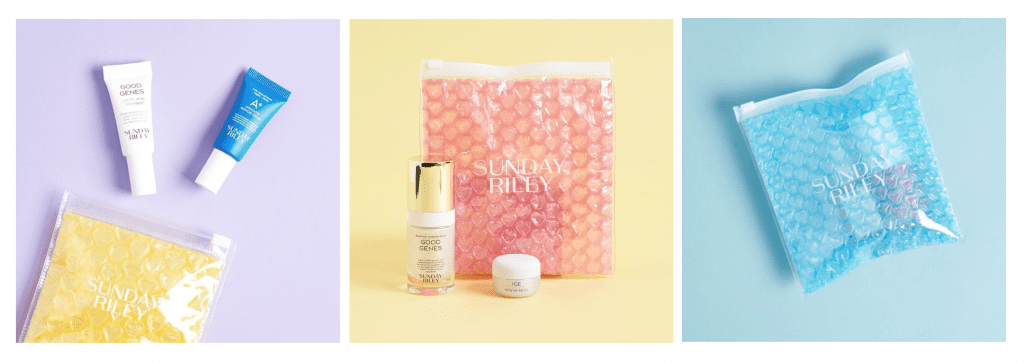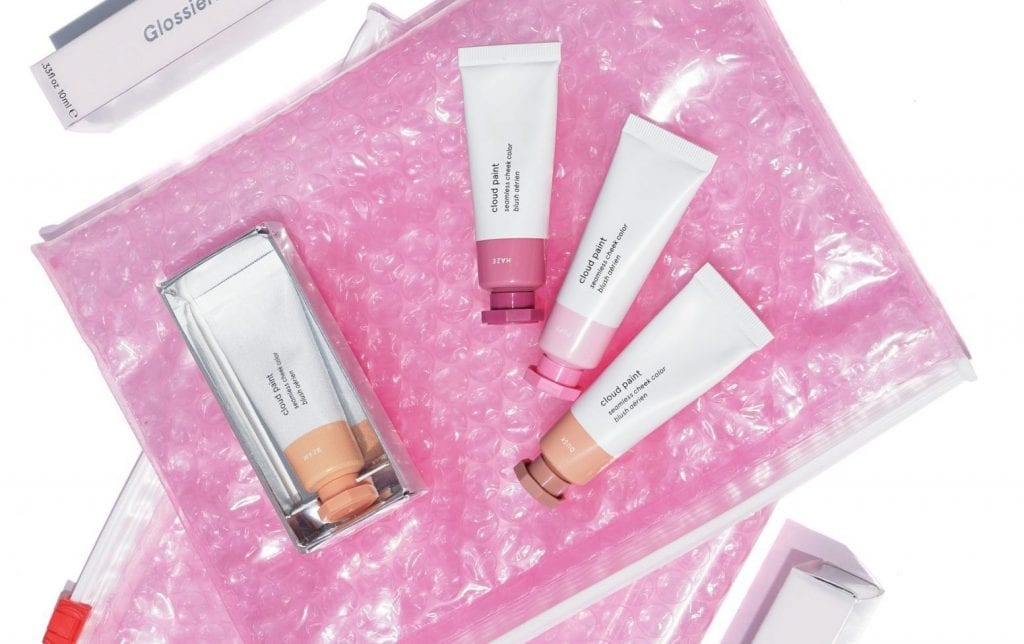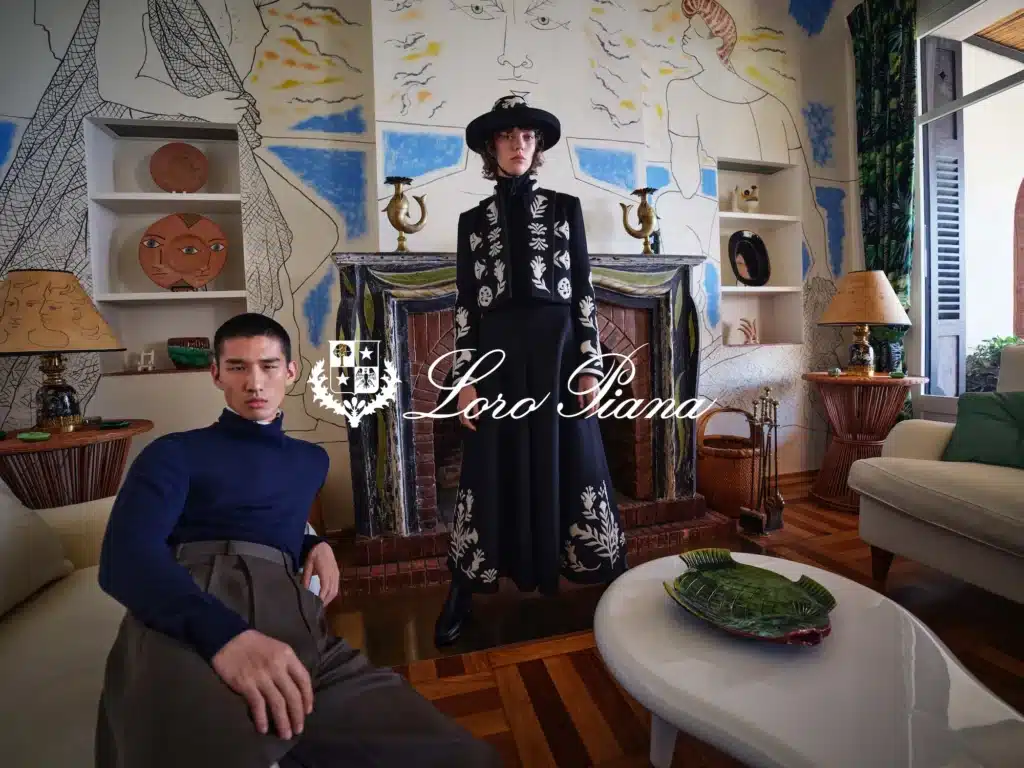Glossier’s trademark application for registration for its use of a specific shade of pink on a bubble-wrap lined pouch in connection with the sale of cosmetics is faring pretty well before the U.S. Patent and Trademark Office. After overcoming some initial pushback from the national trademark body on the basis of functionality and distinctiveness (or better yet, the potential lack of distinctiveness), the 5-year old beauty startup’s application has gotten the go-ahead to be published for opposition, the next stage in the pre-registration process, which is relatively remarkable, in itself, given the rights at stake and the young age of the millennial-centric beauty brand.
In the midst of the ongoing pre-registration process for Glossier’s pink pouch, the application for which was filed back in May 2019 and which asserts rights in “the claimed color pink as applied to bags featuring lining of translucent circular air bubbles and a zipper closure,” another beauty brand has taken to using a pink pouch of its own, thereby, revealing some of the potential legal squabbles that Glossier has on its hands, and also shedding light on the power of the pouch to indicate the Glossier brand (and thus, tempt others adopt similar packaging of their own).
Among its hot-selling Good Genes serum, body lotion and razor from young upstart Flamingo, Noto Botanics Agender Oil, and its Ice Ceramide Moisturizing Cream, all of which come in the latest version of its “Sunday Shares” box, a quarterly subscription offering, Sunday Riley is offering up a bubble wrap pouch in a pink hue. Save for the “Sunday Riley” name, which is emblazoned on the front, the bag – which was a standout item, according to at least one writeup of the box – looks a whole lot like Glossier’s own signature pouch, one that Glossier claims (in connection with its application for registration) that consumers “immediately recognize it as Glossier’s Pink Pouch” as a result of its “five years’ of [using] the mark.”
On the basis of Glossier’s existing rights in its use of the specific shade of pink on “bags featuring lining of translucent circular air bubbles and a zipper closure” (as trademark rights are not amassed by registration but by using that mark in commerce and in the case of certain trade dress, by building up secondary meaning in the minds of consumers), it could very well file a trade dress infringement lawsuit against beauty rival Sunday Riley now.
As for whether the case would be an open-and-shut win is another story.
Decorative use?
One potential defense of trademark infringement allegations is that the allegedly infringing party’s use is not infringing because it is not using the mark in a trademark capacity. That is a critical distinction, as in order for the use of another’s trademark to be infringing, the alleged infringer must actually be using the mark … as a mark. In other words, it must be using the mark to indicate the source of (i.e., the brand responsible for) the product, which is not what is happening when a mark is used in a purely aesthetic manner.
With that in mind, in response to a hypothetical suit, in addition to arguing that consumers are not likely to be confused as to the source of the bag given that Sunday Riley’s name is written right across it (which could prove persuasive but would arguably not rule out the chance that consumers might believe the bag – and the products associated with it – are the result of a collaboration between the two brands, although no such collab exists), counsel for Sunday Riley would almost certainly point to the fact that the brand does not only use pink bubble wrap pouches.

As it turns out, Houston, Texas-based Sunday Riley – which is currently still embroiled in a settlement with the Federal Trade Commission for allegedly engaging in a scheme to infiltrate Sephora with “fake reviews [about its products]” – has also made use of blue, yellow, and entirely clear bubble wrap pouches in connection with its sale of various cosmetics and skincare products. This arguably suggests that its use of the colors is decorative and thus, not for the purpose of indicating the source of the bags and the products inside.
(Glossier, on the other hand, exclusively uses pink bubble wrap pouches, and by virtue of that uniformity, paired with years of use and promotion of that use, consumers have come to link the pink bags with the Glossier brand, according to Glossier, and thus, trademark rights are born).
A Famous Color Case
Such a scenario harkens back to one in which color – and the allegedly infringing use of it – found itself at the center of a heated legal battle in 2011 when Christian Louboutin filed suit against Yves Saint Laurent. In the complaint that it filed in a New York federal court, Louboutin argued that by making and selling footwear with a red sole, YSL was infringing its federally registered trademark, which, at the time gave Louboutin exclusive rights in its use of a specific Pantone-categorized shade of red on the outsole of a shoe. (The registration has since been formally limited in scope to extend only to such use of the red sole “on footwear that contrasts with the color of the adjoining (‘upper’) portion of the shoe.”).
Counsel for YSL would ultimately argue that because color serves vital “ornamental and aesthetic functions” in the fashion industry, no brand, including Louboutin, should be able to claim exclusive rights in a color. More than that, though, YSL’s legal team would point to its pattern of selling single-color shoes with matching outsoles since the 9170s, with such shoes coming in red, purple, and blue colorways, among others. One of the implications there? That YSL’s use of color was not infringing because it was not meant to act as an indicator of source; it was used for decorative purposes.
Such an argument would could certainly be used in the (hypothetical) case at hand in light of Sunday Riley’s adoption of a number of different colored bags, which could actually be the result of a specific (and legally-minded) attempt to avoid trademark liability while still using the Glossier-esque pink bubble wrap bag.
Rights for a Burgeoning Brand
Looking beyond the potential for a trademark-centric back and forth between Glossier and Sunday Riley, there is another consideration worth addressing here, assuming that Sunday Riley is, in fact, seeking to benefit from Glossier’s appeal by way of its own pouch and not merely using the pink in a purely decorative manner. (Counsel for Glossier and branding experts, alike, would likely argue that the former is at play).
The fact that other brands (or at least one other brand) are making use of very-Glossier pink pouches, well may suggest that Glossier’s product packaging does serve to signify its brand in the minds of consumers, and that uses of similar pouches by others is an attempt by others to “plagiarize” the mark, which is a factor that courts consider when determining whether a mark that is not inherently distinctive has acquired distinctiveness, and thus, may be protected.
A big part of the significance here stems from the ability of a company as young as Glossier to amass such consumer recognition in an element of its branding. This is noteworthy given that most of the companies that have traditionally been successful at establishing rights in unconventional marks, such as product packaging or product configurations, themselves, have pointed to decades of consistent use of those mark, tens – if not hundreds – of millions of dollars in sales in the trademark or trade dress-bearing products/services, and sizable sums of advertising dollars specific to the trade dress.
Barbour, for instance, in seeking to register the design of its signature wax jacket, cited 40 years of use of the jacket configuration (and unsolicited media attention plus advertising expenditures spanning that period) and “sales in excess of $23 million” in the U.S., alone, for a less-than-10-year period. In granting a registration for the more than 125-year old brand, whose fans range from decades of British royalty (Queen Elizabeth, the late Princess Diana, Prince Charles, Kate Middleton, etc.) to James Bond (actor Daniel Craig wears a Barbour wax jacket in Skyfall), supermodels like Claudia Schiffer, and influencers like Alexa Chung, the U.S. Patent and Trademark Office found that evidence to be sufficient to establish secondary meaning linking the jacket design to a single source in the minds of consumers.
But a product history of 40 years and sales of more than $23 million are no small figures, and thus, set something of a high bar when it comes to establishing trade dress rights. Nonetheless, if the instance at hand – which sees a rival beauty brand producing similar packaging (potentially with the aim of benefitting from some of the sweeping demand for all things Glossier), and the status of Glossier’s application for registration – is any indication, these rights are seemingly being established by early-stage companies, which is absolutely worthy of attention and may serve to indicate what is to come for similarly-situated brands.














